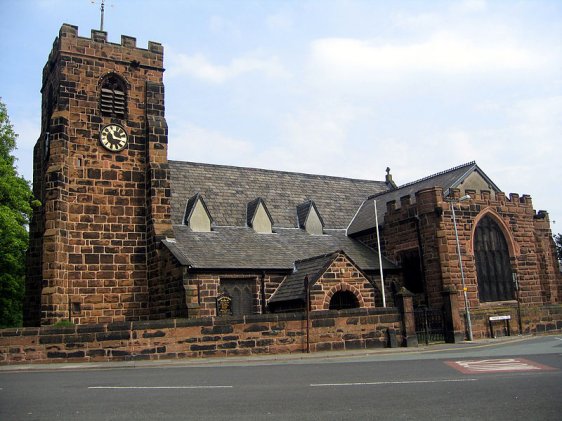 Widnes, Cheshire, England: Source: https://commons.wikimedia.org/wiki/File:Widnes_Town_Centre_-_geograph.org.uk_-_379936.jpg
Widnes, Cheshire, England: Source: https://commons.wikimedia.org/wiki/File:Widnes_Town_Centre_-_geograph.org.uk_-_379936.jpgAuthor: Sue Adair

Widnes is an industrial town on the northern bank of the River Mersey in Cheshire, England. It is located at the Runcorn Gap, the part of the river where it narrows. Across from Widnes is the town of Runcorn. Widnes has a population of around 58,000 people. It was historically part of Lancashire until being transferred to Cheshire in 1974.
The terrain of Widnes is one of marsh or moorland. There has been human presence in the area going back to the Stone Age, based on the discovery of flint arrowheads at Pex Hill. Also found here are some Roman coins, providing evidence of Roman presence, even though Roman roads bypassed the area.
When the Vikings invaded Britain in the 9th century, Widnes was at the southern frontier of their territory, called Danelaw, or "land under Danish law". The River Mersey derived its name from the Anglo-Saxon maeres ea, meaning boundary river, as it formed the boundary between Danelaw and the Saxon kingdom of Mercia.
Widnes was just a small village until the 19th century, when the Industrial Revolution brought rapid development to the area. As with neighboring Runcorn, it was the center of the chemical industry. Due to shortage of labor, the town even brought significant numbers of immigrants from Poland, Lithuania and Wales.
Today Widnes is still an industrial town, though the days of the chemical industry - and its polluting byproducts - are now a thing of the past.
Visiting Widnes
From Manchester, take the M62 motorway to Junction 7, then continue south on the A557 road until you arrive in Widnes. St Luke's Church, Farnworth, Widnes. View of the library funded by Andrew Carnegie: Source: https://commons.wikimedia.org/wiki/File:Widnes_Farnworth_St_Luke_2.jpg
St Luke's Church, Farnworth, Widnes. View of the library funded by Andrew Carnegie: Source: https://commons.wikimedia.org/wiki/File:Widnes_Farnworth_St_Luke_2.jpgAuthor: Peter I. Vardy

Places of Interest in Widnes
- Catalyst Science Discovery Centre: Science center and museum documenting the chemical industry of Widnes.
- Promenade at West Bank: A former industrial waterfront, now turned into a recreation area.
- St Luke's Church, Farnworth: Anglican parish church of the diocese of Liverpool, in the village of Farnworth, Widnes, now a Grade II listed building.
- St Mary's Church, Widnes: Anglican parish church in the West Bank area, now a Grade II listed building. It was completed in 1910 in the Gothic Revival style.
- St Michael's Church, Ditton: Roman Catholic church in Ditton, Widnes, now a Grade II listed building. Built in the Gothic Revival style, it was consecrated in 1876.
 Latest updates on Penang Travel Tips
Latest updates on Penang Travel Tips

Copyright © 2003-2025 Timothy Tye. All Rights Reserved.

 Go Back
Go Back